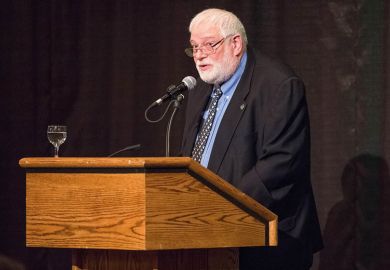For 2017, Canada increased its permanent immigration target to almost 1 per cent of the population. This was a decision of the Liberal government of Prime Minister Justin Trudeau but is more or less in line with the policies of previous Canadian governments, regardless of party and prevailing economic conditions. Immigration is part of the fabric of Canadian life. Currently, the populations of Toronto and Vancouver, Canada’s two largest cities, are approaching 50 per cent “visible minority”, and this is projected to increase to almost 70 per cent by 2036. Numerous policies support this rapid social change.
Official anti-discrimination and multiculturalism policies matter. So does selection of who can come. In 2016, about 54 per cent of immigrants to Canada were economic migrants (about 40 per cent of whom were families selected using a points system that predicts labour market success). A further 27 per cent were family members of Canadians, mostly of previous immigrants, and 19 per cent were refugees (including a large number of Syrians).
Another factor undoubtedly underlying the success of immigrants to Canada is that, when granted permanent residence, new immigrants are almost immediately afforded social benefits. These include language classes, targeted resettlement services and access to public health care. This reflects expectations among both policymakers and in wider civil society that immigrants should become full citizens relatively quickly, rather than being admitted on a conditional, short run basis.
But these policies are not sufficient conditions for immigrant success, especially in the longer run. Canada’s modern history as a successful immigrant-receiving nation owes a lot to its education system. That both childhood (first-generation) immigrants and second-generation immigrants have higher levels of educational attainment than those born to Canadian-born parents speaks to their determination and perseverance, and also to the openness and flexibility of the system they join.
This is true even for children who arrive with language skills that lag behind those of native-born Canadians, and for those arriving from countries with education systems that don’t perform as well as the Canadian system on, for example, the Organisation for Economic Cooperation and Development’s Pisa test. Indeed, even those who arrive as refugees are more likely to graduate from university than children born to Canadian parents.
One advantage is that Canada’s K-12 system scores highly in terms of being generally equalising, reflected in the relative lack of variation in reading and maths scores across schools and income levels. So immigrants are fitting into a system that is already geared to taking in students from diverse backgrounds and helping them develop at least the basic skills that are needed to move on to higher education levels and, beyond that, into the labour market.
A key institutional characteristic is having elementary and early secondary systems that do not “stream” or “track” students at early ages. This means that post-secondary opportunities are often still open to those who face challenges at these levels. In particular, a sizeable number of the children of immigrants attend university despite their low grades at age 15, an age at which they would have been streamed away from university in many other countries (including many in Europe).
Indeed, both first- and second-generation immigrants from almost all regions have higher university attendance rates compared with the Canadian-born, and this result holds even when taking into account factors such as parental education, secondary school grades, Pisa scores at age 15 and family income: all considered important predictors of university attendance. The most astounding results are for Asian students, but even African immigrants attend university at much higher rates than non-immigrant Canadians.
So while universities in some developed countries may be worried about what ageing populations and immigration crackdowns may do to their student numbers, Canadian institutions can be confident of continuing to flourish as favourable political winds continue to propel ambitious and successful immigrant students their way.
Ross Finnie is professor and director of the Education Policy Research Initiative (EPRI) at the University of Ottawa. Arthur Sweetman is professor at McMaster University and associate director of EPRI, and Richard E. Mueller is professor at the University of Lethbridge and associate director of EPRI.
Register to continue
Why register?
- Registration is free and only takes a moment
- Once registered, you can read 3 articles a month
- Sign up for our newsletter
Subscribe
Or subscribe for unlimited access to:
- Unlimited access to news, views, insights & reviews
- Digital editions
- Digital access to THE’s university and college rankings analysis
Already registered or a current subscriber?



